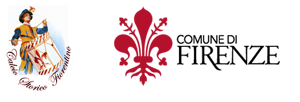About
A game similar to Field Hockey played with a ball made of wood or rope by Chaco Indian tribes in South America, sometimes instead of war or to prove superiority over another tribe. The World Indigineous Games were held in Palmas, Brazil, in 2015 for the first time. This is a Maori video of the event from Te Karere TVNZTe Karere TVNZ.
Video
References
Bibliography
[1] Wojciech Liponski (2003) “Chaco South American Indian Hockey” World Sports Encyclopedia pg. 123. MBI Publishing, St. Paul. Minnesota, USA.
Social Media
[2] You Tube Te Karere TVNZTe Karere TVNZ Channel (2015) Indigenous sports teams meet in Palmas, Brazil for inaugural worldwide Indigenous Games [Internet] Available from: https://www.youtube.com/watch?v=wXDV331Ob8M [Accessed 18 May 2021]
Acknowledgements
Thanks to Emmanuel (Kimmage Development Studies Centre, Dublin, Ireland).
About this document
Researched, compiled and written by Enda Mulcahy for the
Eirball | Irish North American and World Sports Archive
Last Updated: 13 July 2021
(c) Copyright Enda Mulcahy and Eirball 2020
You may quote this document in part provided that proper acknowledgement is given to the authors. All Rights Reserved. The Logos and Videos used in this article remain the property of the organisations and individuals which own the copyright and are used here for educational and information purposes only.



![Calcio Storico Fiorentino Stock Photo - Azzurri di Santa Croce (Blue) v Bianchi di Santo Spirito (White) [Reference: 6][Picture Credit: Giuseppe Sabella]](https://gaa.world/wp-content/uploads/2020/12/Calcio-Storico-Fiorentino-Azzurri-v-Bianchi-Stock-Photo-Cropped-1024x509.jpg)



